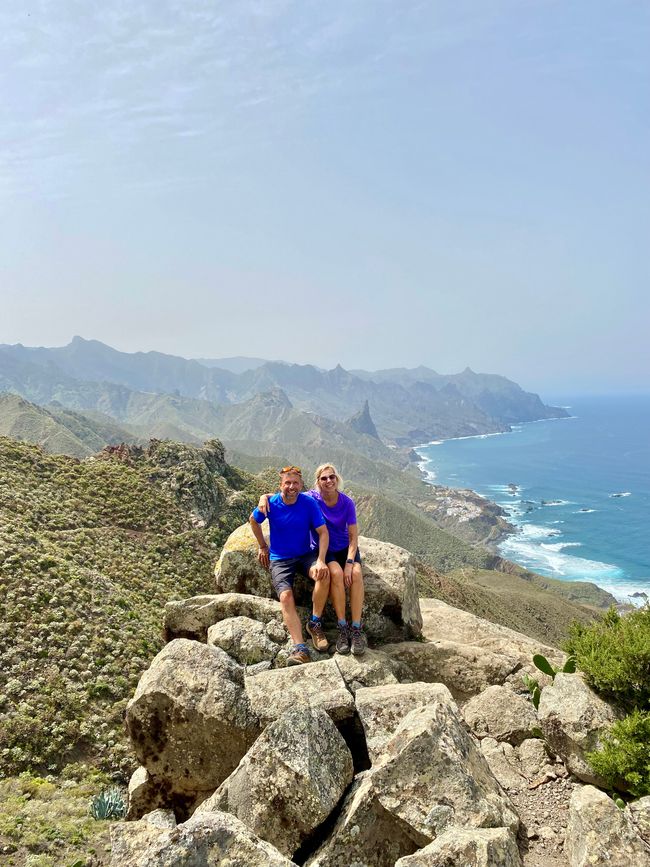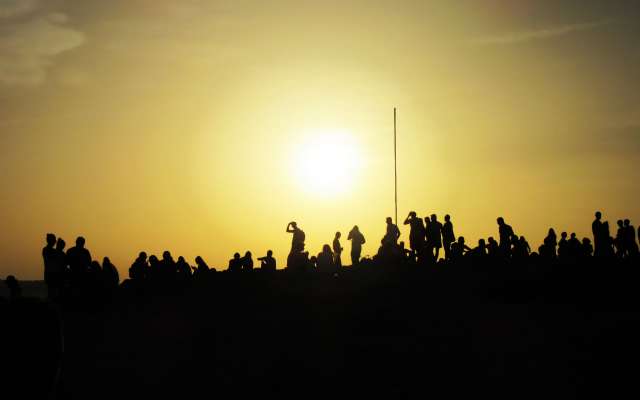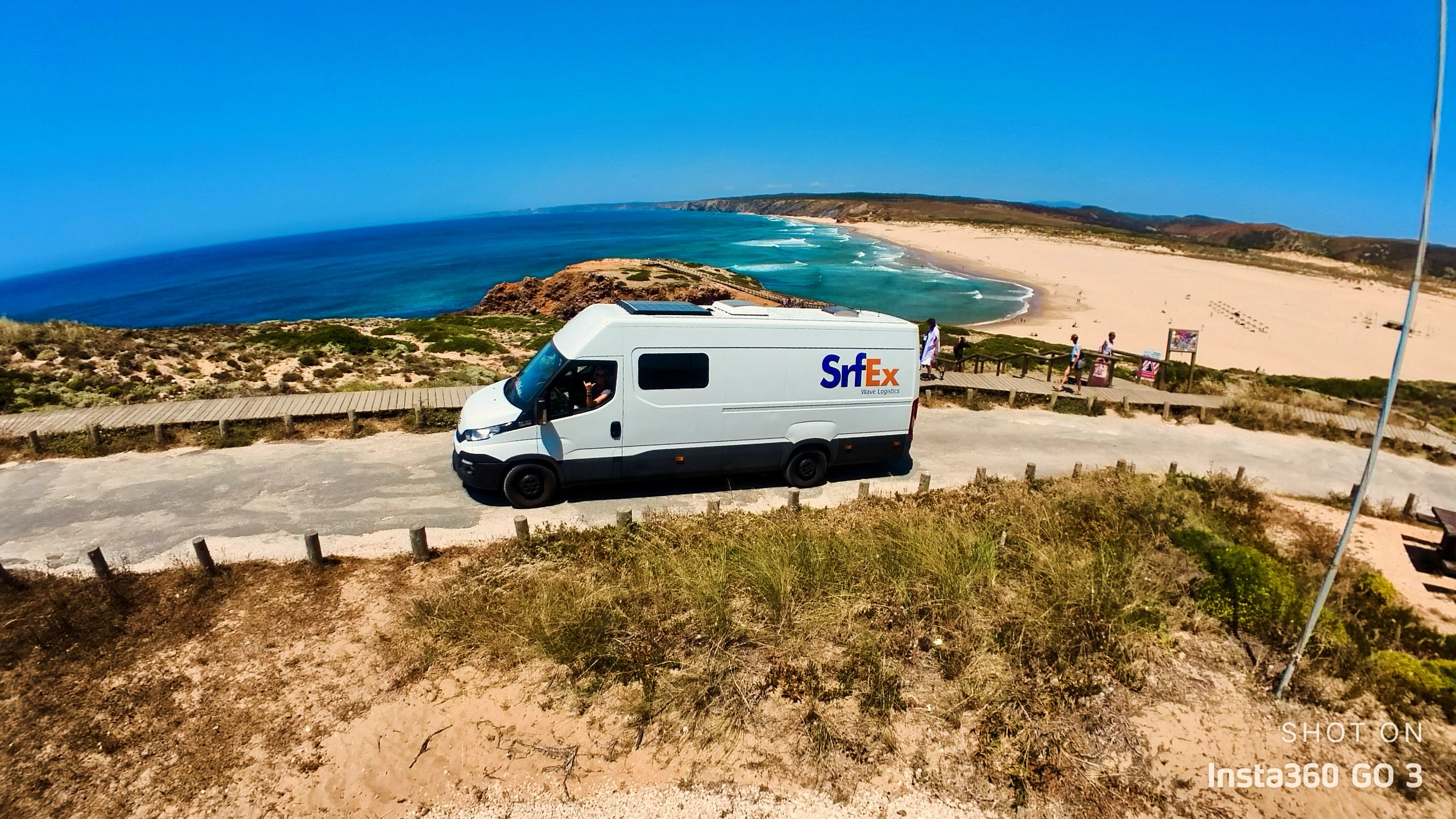Jeanett
Ich liebe euch, ein tolles Team, viele tolle und beeindruckende Berichte und Fotos. Weiter so. Vertragt euch und passt auf euch auf! 😊
Coastal Nomads - Suzi, John & Betty
vakantio.de/coastal-nomads-suzi-john
Day 114 - Distance 7,000 km - Tenerife - colorful ZDF: Numbers, data, facts
La daabacay: 30.05.2024
Ku biir Wargeysyada
Freestanding/wild camping: (still) largely tolerated on Tenerife. So-called "camping behavior" is prohibited, e.g. putting tables and chairs outside, putting out awnings, barbecuing, etc. However, this is viewed very differently from municipality to municipality. In El Medano, for example (now very van-unfriendly), hanging a wet wetsuit on the van was criticized as camping behavior! We always tried to remain as inconspicuous as possible
Unpleasant experiences while wild camping: none
Flood of motorhomes: yes, there is one (unfortunately) on Tenerife these days. Many mainland Spaniards have now bought a motorhome and brought it to the island. The motorhome is then used as a mobile holiday apartment. The subsidized flight prices for Spaniards make the trip worthwhile even for a long weekend. In between, the motorhome is parked in specialised parking spaces near the airport for €40 a month (!). For example, around Easter, there is a real motorhome frenzy on Tenerife
Days on Tenerife: We spent a total of 105 days on the island. We never got bored
Route on Tenerife: In total we drove over 3,600 km on Tenerife! The coastline is 360 km = equivalent to 10 trips around the island!
Tenerife ZDF: Size 2,035 square kilometers (11x larger than Fehmarn), length 85 km, up to 54 km wide, almost 950,000 inhabitants, highest mountain (in Spain) is the Teide with 3,715 m height, also the third highest volcano in the world
Fuel consumption/fuel price: Since you're always on ups and downs in Tenerife, our average consumption was 11.7 l/100 km (in Sweden we managed 8.7 l). The price for a liter of diesel is a relaxed €1.20 (the Canary Islands are heavily subsidized by mainland Spain).
Rainy days: Approximately 2-3 rainy days in over 3 months. If you allow for some travel time, you can usually easily avoid the rain in Tenerife by changing location
Official camping or parking spaces: Maybe around 5? And these were mostly so unattractive (and expensive) that you didn't want to spend the night there. So you were more or less forced to "free camp"
Number of overnight stays: We stayed at 26 different locations, so on average 4 days at each location
Beach showers: Very important for us, as we could shower in the van, but that would be quite a hassle. Tenerife is relatively well equipped with beach showers, in fact we showered almost exclusively under beach showers (with organic soap, of course!)
Public toilets: Unfortunately, they are extremely rare, especially on beaches! This means that people do their business in the bush next door (if they don't have a van with a toilet on site, like we do)
Environmental awareness: still has a lot of room for improvement. Over 90% of all wastewater is discharged untreated into the Atlantic, and household waste is dumped in landfills. However, several sewage treatment plants are now under construction, as the EU penalties for discharging waste exceed the costs of building sewage treatment plants
Number of windsurfing days: 33 days on the water in 3 months. Absolute record for me!
Number of windsurfing spots: In contrast to other Canary Islands such as Fuerteventura, there is actually only one spot on Tenerife, El Medano. If the wind blows the wrong way (i.e. not as a NE trade wind), there is an alternative spot on the west coast, La Caleta
Traffic: The Canarios drive quite relaxed and considerately. Everything is easy going. During rush hour, traffic sometimes comes to a standstill on the TF-1 motorway
Friendliness of the Canarians: Very friendly! They greet each other very often, for example when meeting people on the beach, where Germans tend to look away in a state of embarrassment. An Olá, bueneas dias or buena for short is often heard and is often returned (small teaser: this is not necessarily the case in Portugal)
Water temperature: Between 20-21° C. We went swimming almost every day. Water quality was usually first class (although the Canary Islands unfortunately still discharge a lot of waste water directly into the sea, there is enough water around... but currently various sewage treatment plants are under construction)
Average expenses per day: we got by with just over 50 € / day (all expenses on the trip such as food, diesel, eating out, other shopping, excluding running costs at home in Hamburg, excluding ferries)
Number of longer hikes: 18 in total (documented on Komoot)
Number of longer bike tours: 25 in total (documented on Komoot)
Injuries/illnesses: John: bruised rib while windsurfing, injured foot while windsurfing (exit over the reef), thorn from a bush in the shin after a hike with inflammation / Suzi: bruised toe (struck in the bus), luckily we were not ill
Fresh water consumption: approx. 15 l per day (for washing dishes, washing hands, brushing teeth, etc.) if you use the beach shower for showering. A quick shower in front of the bus with a watering can or our 4-5 l mini-jet. You can fill up with fresh water at many petrol stations, or at the beach shower if necessary. We don't drink the water, so we bought 5 or 8 l canisters of drinking water, which cost around €0.90 - €1.50
Toilet in the van: yes, that's a must too... For this trip we got a so-called separation toilet from Trelino, which we are very happy with. You can find tons more on the subject of separation toilets and toilets in the van on YouTube! We'll spare you the details here
Cost of living: still cheaper than Germany, but with an increasing trend. For many Canarios, price inflation is a major problem, especially when it comes to rent. The minimum wage on the Canary Islands is only around €1,000 per month, and unemployment is high. There is hidden homelessness, many live in their cars, others in the barrancos (rock ravines) in tents and even in rock caves
Protests against (mass) tourism: there were protests during our time in Tenerife, every now and then we saw a "Tourists go home" sprayed on the wall. But we never once had the feeling of not being welcome. Many problems also seem to arise from the fact that, as in many other regions, a lot of living space is falling victim to Air-BnB. Politicians in the Canary Islands are under great pressure to act, which will unfortunately also have an impact on the freedom of camping in the Canary Islands
Ferry costs: The costs are relatively high and are between €800-900 including a vehicle in a reclining seat and €1,200-1,300 including a vehicle with a cabin PER TRIP! This means that the ferry trip is only worthwhile if you are staying in the Canaries for a longer period of time. You depart from mainland Spain, either from Huelva or Cadiz. The trip takes between 32 and 36 hours.
China shops: There are huge China shops in the Canary Islands (as big as our hardware stores) that offer a similar range to Amazon. You can get absolutely everything there! As far as we know, Amazon is not active in the Canary Islands and that is why these stores are there
If you have any specific questions about van life in Tenerife, please contact us!
Ku biir Wargeysyada
Jawaab (3)
Danke, machen wir!
Koli
Alles beantwortet!
Welch eine Fun-Facts-Auflistung!
Danke!
Warbixinaha safarka Isbayn

